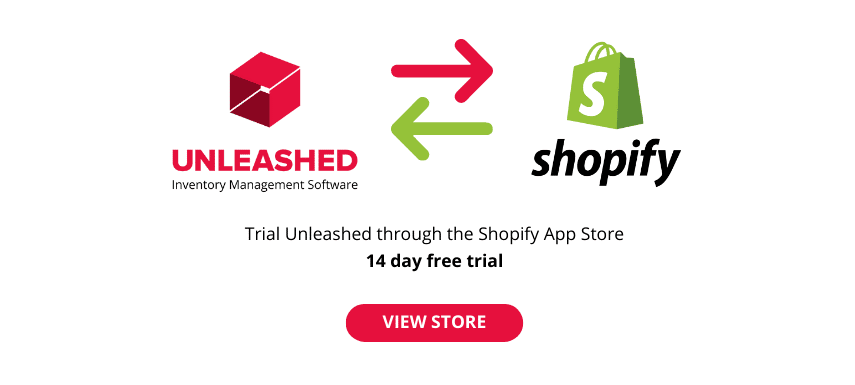
A move to wholesale eCommerce can seem overwhelming, with so many platforms for managing your sales orders now available. So we’ve put together a practical guide to the software you’ll need – including 11 essential questions to ask when you're choosing a platform.
What is a wholesale ecommerce platform?
A wholesale eCommerce platform is an online platform for business-to-business (B2B) transactions.
Because these platforms support B2B businesses, they offer functionality such as customer logins, different payment options, and integrations supporting large commercial transactions.
Purchases made through wholesale eCommerce platforms are generally for large unit numbers – and often for products bought before – and will therefore be highly transactional.
This differs from a business-to-customer (B2C) platform, which will generally be more accessible, with a broad market reach and marketing ploys designed to convert an impulsive or casual site visit into a purchase.
Need to manage eCommerce inventory?
Why is B2B eCommerce so important for wholesalers now?
The pivot toward digital has been accelerated by the pandemic, and wholesale eCommerce – like B2C eCommerce – has shifted rapidly to a new way of operating.
Data shows how this growth has exploded, and is expected to continue. According to Statista, around 17% of B2B sales will be generated digitally by 2023, up from 13% in 2019. In the U.S. it's estimated B2B online sales will reach US$1.8 trillion within two years.
Research from McKinsey & Company backs this trend. Its report on the B2B sector revealed two-thirds of corporate buyers now rely on digital channels as part of the purchasing experience. It also notes capabilities are being ramped up ‘at astonishing speeds’.
While this shift was already underway, the pandemic has supercharged the need for and benefits of eCommerce. According to Mckinsey, eCommerce is now driving nearly one-fifth of B2B revenue.
The benefits for B2B wholesale eCommerce operators are clear. For businesses, there are three further key upsides:
1. B2B eCommerce is efficient
The ability to search online, rather than in a physical store, makes eCommerce transactions vastly more efficient. B2B customers are likely looking for a particular product, and will want to know if it is in stock – and if so what the unit price and delivery timeframes is. Being able to discover this information online saves time and effort for the buyer, and ensures purchases are far more efficient.
2. Data collection from eCommerce supports better customer experiences
Data is central to success in this new world. With opt-in permission, B2B wholesalers can collect information from their customer base that will build a picture of shopping trends and habits. This can then be used to create more personalised experiences for return visits.
3. Client reach is global with B2B eCommerce
Another huge benefit is the ability for a B2B wholesaler to reach both clients and suppliers around the world. While entering new jurisdictions - as a buyer or seller - comes with complications such as taxation issues, language and cultural concerns, it also opens up huge opportunities.
- Read more about the biggest B2B eCommerce trends in 2022
 Not only is eCommerce more efficient for B2B transactions, but it can expand your client base internationally
Not only is eCommerce more efficient for B2B transactions, but it can expand your client base internationally
What are the best ecommerce platforms for wholesalers?
There are numerous eCommerce platforms for wholesalers – many of which promote themselves as best in class.
With this variety there’s no ‘one size fits all’ solution, and any B2B wholesaler looking to expand into eCommerce needs to think carefully about its business needs and priorities before choosing which platform to use.
The most popular platforms used for B2B wholesale are the likes of Shopify, Magento (now Adobe Commerce), and BigCommerce.
Here we take a closer look at each of these popular platforms:
Shopify for B2B eCommerce
Shopify, the Canadian platform founded in 2006, has grown into a behemoth of the sector, and now operates across 175 countries.
Company reports show how the pandemic has massively boosted Shopify's revenue and sales. Its revenue for 2021 was 57% up year-on-year, to US$4.6 billion, while merchant sales rose 47% to US$175.4 billion.
Shopify’s popularity can be attributed to its simplicity and effectiveness. Businesses of any size can ‘go live’ on the platform at speed and utilise Shopify’s many integrations. Shopify is partnered with the likes of Google, Facebook and Amazon, enabling those using its site to build bespoke business experiences for their customers. Shopify also offers different pricing structures that can be aligned with your business's needs and growth strategy.
Magento's B2B eCommerce offering
Magento, like Shopify, is a hugely popular platform.
However, rather than being hosted this platform is open source, meaning Magento offers customers the ability to integrate across a number of partners – if they have the know-how or can outsource this task. These integrations can cover areas such as shopping, customer relationship management, enterprise planning, or backend systems like accounting.
Magento is generally regarded as being stronger in the areas of content creation, website design, and SEO reach, and could therefore be more suitable for larger businesses or those that are in the process of scaling up.
The cost of using the platform is dependent on the tools used and integrations required. However, using Magento can end up being relatively expensive for a business looking to grow.
BigCommerce for online B2B
BigCommerce is another popular eCommerce platform choice. It offers a hosted platform with extensive integration capabilities and mobile optimisation. It allows its users to implement specific needs across Content Management Systems and front-end design.
BigCommerce offers a fixed pricing structure but is regarded as being comparatively weak in areas such as content creation, so can end up being quite expensive for a small-to-medium business to maintain.
 Do your due diligence when choosing a platform for your B2B eCommerce store - there are plenty of platforms out there, and you'll want to find one that suits your needs now and in future
Do your due diligence when choosing a platform for your B2B eCommerce store - there are plenty of platforms out there, and you'll want to find one that suits your needs now and in future
How do I choose which wholesale platform to use?
We’ve only touched on some of the most popular platforms above, and there are numerous others on offer – and any business looking to expand into eCommerce will need to do its own analysis on the pros and cons.
Finding the right platform is very much a case of figuring out what will suit factors like your business’s needs, priorities, ambitions and budget best. To make considering these easier, we’ve outlined the key considerations below in 11 key questions to ask yourself.
1. What is the cost for set-up and ongoing maintenance?
Cost will be a driving factor in choosing your platform.
Hosted platforms offer clear subscription costs which make it far easier to budget. For example, Shopify’s basic subscription is US$29 per month, and is designed for a new eCommerce business with some in-person transactions. At the higher end, Shopify is US$299 per month, with advanced offerings around reporting, staff account numbers and inventory locations.
Compare this with Magento, which – with its open source offerings – has a far more fluid pricing structure. The cost is dependent on several things, including the need to have in-house webdev knowledge to ensure the eCommerce site and architecture is built in the most effective way.
As such, Magento is likely better suited to businesses that are more advanced in their growth. Its ownership by Adobe Commerce also means it’s backed by sophisticated technologies that may suit larger businesses.
2. How easy is it to set up my eCommerce operation?
Again, Shopify and other hosted platforms offer an easier ‘plug-and-play' system for businesses venturing into the eCommerce world. Open source platforms, on the other hand, are really designed for more sophisticated operations that require bespoke integrations, front-end design and backend reporting.
3. Does the platform integrate seamlessly with the other software I’m using – or want to use?
Integrating software can be a hugely time-consuming and frustrating task, but it is vitally important for ongoing business management and customer satisfaction – and therefore pays off in the long term.
Ecommerce platforms generally offer a huge number of integrations, but your decision on these will depend on what your business is already using. Shifting to an eCommerce platform may also offer the chance to upgrade your software, and integrate with more advanced technologies.
 When considering options, look into whether platforms make customer purchasing and shipping easy and transparent
When considering options, look into whether platforms make customer purchasing and shipping easy and transparent
4. Is it easy for customers to get quotes, make purchases and see shipping times?
Customer satisfaction – particularly in the eCommerce environment, where online reviews and feedback are common – is key to ensuring return business and building a good reputation.
As such, the platform chosen should either offer or support shipping solutions such as Shipstation, Shippo, or Essential Hub. These solution providers integrate with the likes of Shopify, Magento, BigCommerce and WooCommerce, and offer competitive pricing, carrier options, tracking and customer service.
Using software designed specifically for this purpose will bring costs down, and save time internally. However, as always, it will be important to assess the software offering against the business needs, and ensure it integrates with your favoured eCommerce platform.
5. Does the platform offer rapid response options?
Increasingly customers are demanding rapid responses to their queries or concerns. This has led to the rise in chatbots being used to answer basic questions immediately.
There is also a rise in the demand for instant connection to human support. Shopify, for example, offers a number of integrations that support this need, such as Tidio or SocialReply, which utilise instant messaging tools to deliver better customer service and satisfaction.
6. Is there extra functionality to meet your business needs?
Your business may require particular features to meet its specific needs. For example, a media content agency may want to showcase its video content, while a digital conversion business may want to prove its credentials in marketing.
As such, it will be important to match platforms with that need. Magento, backed by the Adobe platform, may be able to support more complex multi-media content, while others may be stronger in SEO support.
7. Does the platform offer payment options?
Payment options are an important part of the process. It will be worth considering whether invoicing is appropriate given that this delays payment. You should think about which credit cards will be accepted (which may depend on fees charged, and if the business or customer will absorb them), if the likes of PayPal, Facebook Pay and Apple Pay will be offered, and if cryptocurrency payments may be offered now or in the future.
Generally platforms will offer their own payment systems, such as Shopify Payments, but they may only be supported in certain countries. Therefore, you may have to explore third-party offerings as well.
 A key question to ask is: Does the B2B eCommerce platform meet your business needs – both current and future?
A key question to ask is: Does the B2B eCommerce platform meet your business needs – both current and future?
8. What support does the provider offer, and how much does it cost?
Ecommerce platforms will generally offer some form of support, but the accessibility of this can differ. The different ways – and speeds – at which issues are resolved will be an important factor to consider when choosing a platform.
For example, Shopify offers round-the-clock support for even its cheapest business account, along with community forums and a blog. Magento’s platform also offers an extensive catalogue of troubleshooting information, and invites those with issues to lodge a ticket for resolution. WooCommerce also offers troubleshooting documentation, with a Slack chat group for those using its platform.
9. What sort of mobile support does the platform provide?
Mobile optimisation is also a factor when choosing a platform. The rise and rise of mobile – and, in turn, customers’ reliance on the small screen – means many developers and content creators are working with a mobile-first design and experience mindset.
However, it will be important to establish if that suits your audience. Mobile optimisation is now a central part of any platform offering, but the sophistication needed will depend on your customer base.
If your business is generally serving big B2B clients, it’s more likely they will be ordering products from a desktop in an office, rather than a mobile on the go. As such, an understanding of your customers’ needs will be integral to any decisions around mobile optimisation or prioritisation.
10. How customisable is the platform?
Another factor to consider is your business’s ambitions, both short- and long-term. It may be that you intend to start with a basic offering and test the market, before scaling into a more sophisticated structure.
As such, it will be important to consider how much any platform you choose can be customised and CRMadapted to your growth plans and potential. Once a platform is chosen, it can be time-consuming to shift, and it is therefore valuable to approach any decision with a view to longer-term development.
11. Can you integrate multiple channels into your eCommerce dashboard?
Multichannel eCommerce allows customers to browse and purchase products across several different channels.
It’s an incredibly valuable concept, because it means your product is seen by audiences across multiple outlets – and can be seen by the same audiences, several times. This can often prompt an impulse sale or one that just happens to fit the need at that time, such as seasonal demand.
Because of this, the ability to integrate multiple channels into an eCommerce dashboard is important, although it may only be implemented as the business grows.
Therefore, it will be important to explore the capacity for multichannel sales and marketing on the platform you select, to ensure it meets both the existing and future needs of the business.
 For maximum efficiency, ensure your platform of choice integrates with other software you plan to use – such as CRM, inventory management and accounting systems
For maximum efficiency, ensure your platform of choice integrates with other software you plan to use – such as CRM, inventory management and accounting systems
What integrations do I need for B2B wholesale?
Another question to ask is what integrations you’ll need to run your B2B wholesale operation. Generally, the following are recommended:
- Customer Relationship Management (CRM) tracks the customer journey and supports each step towards a sale. CRM software can analyse and segment your customer data to improve the experience going forward, with the end goal of converting more customer journeys into sales.
- Accounting software such as Xero or Quickbooks supports professional billing systems as well as backend requirements for reporting. They also allow for real-time transparency of cashflow to help with financial decisions.
- Inventory management software is crucial to track what is available, what is on order, and what stocks are low. Effective inventory management has a very real impact on the bottom line – avoiding, at the very least, over- or under-supply of products or materials. When managed with the right software, significant time and costs can be saved.
- Web analytics like Google Analytics allow you to track your business’s digital performance and identify trends that can be fed back into the business model. Google analytics supports the collection of data, analysis, reporting and integration into other software for improving the user experience or business backend.
- Point of Sale (POS) software supports the final step in the customer’s purchasing journey, where they are charged for the product. It’s important to have the right software to ensure GST and other taxes or fees are appropriately charged.
- Security software will protect the business from hacks or other breaches. Unfortunately, cyberattacks are becoming increasingly common given the rise in valuable data being held digitally. Ensuring a reliable security system is in place is a basic requirement for any business transitioning to an eCommerce model.
What are the benefits of integrating inventory management for wholesale eCommerce?
Inventory software allows a B2B business to track its stock, figure out what is needed and what is not, and ideally balance the quantity held with customer demand.
Given the generally high unit numbers of B2B orders, transparency over products is an important part of meeting customer demand – and ensuring customer satisfaction. For example, if there is a standing order for a certain number of widgets on order every three months, it would be frustrating for the customer to discover there was a shortage in stock.
Wholesale inventory management software also allows for real-time analysis of stock on hand, or required to be ordered. In turn this allows for trends and sales patterns to be analysed, which supports the ability to maximise profit margins.
How to use Unleashed’s B2B store app for wholesale eCommerce
Unleashed’s B2B store app for wholesale eCommerce is directly linked to Unleashed inventory management software and offers valuable features and benefits, including:
- Visibility over products, with customers able to see and order from stock that is shown as available
- The ability to track order status, allowing a customer to prepare for product delivery
- The ability for customers to repeat previous orders with minimal steps
- The personalisation of stores to satisfy business needs
- The ability to scale while still maintaining a Business As Usual approach

